If you can look with equal appreciation and concern at timber rattlesnakes and, say, New England cottontail rabbits — both gravely imperiled in the Northeast — you’ve arrived as a naturalist.
Most Americans aren’t close to that. But there’s progress in Massachusetts thanks to the Division of Fisheries and Wildlife’s Natural Heritage and Endangered Species Program, created in partnership with The Nature Conservancy.
Many states protect their rattlesnakes, but Massachusetts possesses the spine to breed and release them — “headstarting” it’s called. So far, this desperate effort to save New England’s most endangered vertebrate has been limited to two of the five isolated populations. After centuries of persecution and habitat destruction Massachusetts is down to about 200 rattlers. The species is in no better shape elsewhere in the Northeast.
While the Division doesn’t treat its legally mandated recovery plans as classified documents, it doesn’t hold news conferences about them either. It did discuss, with appropriate entities, its plan to create a timber-rattler sanctuary on Mt. Zion — an uninhabited 1,352-acre wilderness island in Quabbin Reservoir (Boston’s water supply). The island, off limits to the public, undoubtedly sustained rattlers in the past. It has a lush prey base and a large boulder field for hibernation. No other hibernaculum exists for miles.
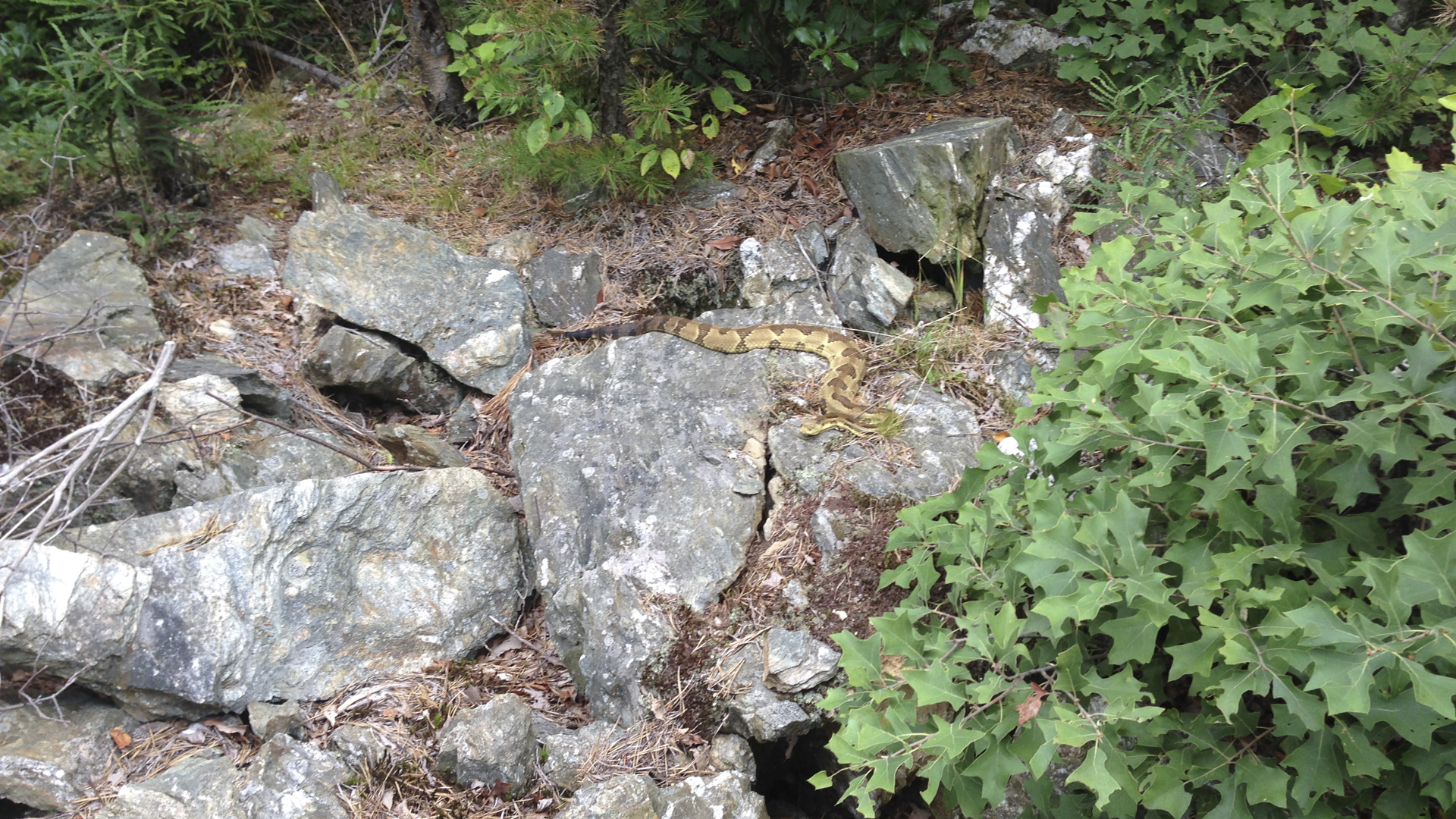
In February Peter Mallett, president of the Millers River Fishermen’s Association, got wind of the plan and fired this screed to multiple contacts: “Who are the idiots that think this is a smart thing to do? Doesn’t anyone realize that these reptiles travel through water and land and will multiply? And what about the many people that this will endanger; not just in the Quabbin, but everywhere?” Within hours the story went nationally viral.
Snakes on an Island
No one was more outraged than the state’s most powerful environmental legislator, Sen. Anne Gobi (D-Spencer), chair of the Joint Committee on Environment, Natural Resources and Agriculture. She promptly ordered an oversight hearing.
When I interviewed her, she offered this: “It puts me in a lousy position when we’re kept in the dark. If the goal is to have a population of rattlesnakes, it would seem to me that the best place would be a controlled setting like a zoo.”
Media hype and misinformation panicked the ecologically challenged. Venom was going to leak into Quabbin’s 412 billion gallons of water, poisoning Boston residents. Snakes would be slithering out of faucets. The ravenous serpents would devour every living thing on the island, then swim to the mainland and overrun the state.
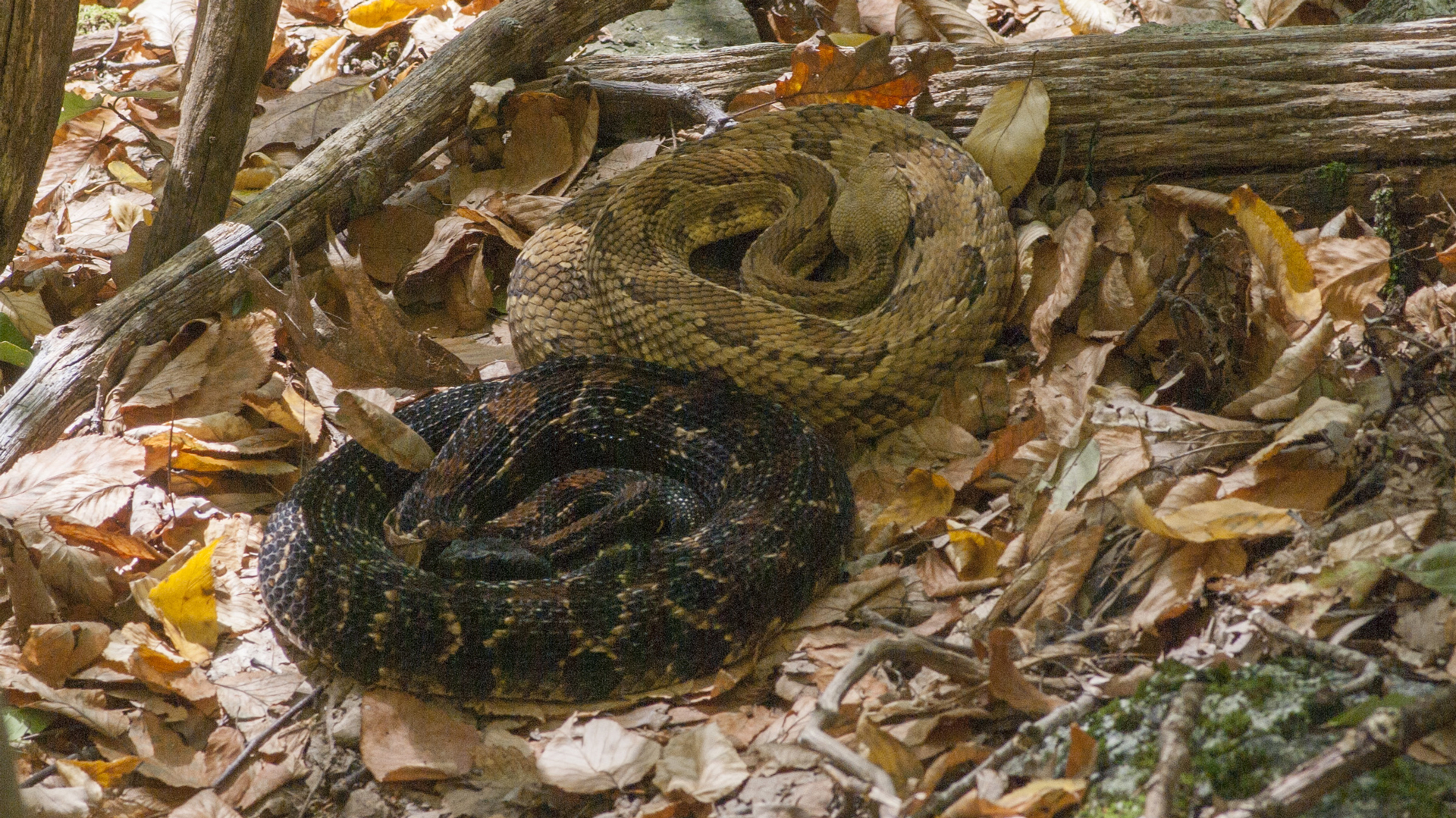
“Snakes on a plane? No, on an island, but just as scary,” screamed a Boston Globe link to hardcopy news alleging that the Division would “breed and raise 150 venomous timber rattlesnakes and turn them loose.” The Division will be delighted if it can breed five a year. Provided they survive and reproduce, natural recruitment might push the population close to 150 by mid-century.
The Globe’s Meredith Warren called the plan a “Jurassic Park-like experiment,” wrongly reporting that “your tax dollars will be paying for snake baby-sitting.” Of the Division’s $6.5 million budget, just $150,000 issues from the General Fund. Each year all Natural Heritage and Endangered Species projects combined cost taxpayers 2 cents each.
In an interview with former TNC biologist and the Division’s current Natural Heritage director Dr. Tom French, CBS Radio’s “Nightside” host Dan Rea continually voiced his hatred of all snakes. He kept asking why we need rattlesnakes, what they’re good for and why the Division is wasting resources protecting them in the wild when they’re dangerous, ugly, unpopular and, if allowed on the planet at all, should be kept in zoos. Somehow French maintained his cool, occasionally breaking through the monologue with clarity and humor.
Not Just About the Cute and Cuddly
The snakes are being headstarted at the Roger Williams Park Zoo in Providence, Rhode Island where my wife Donna and I were met by their doting keeper, conservation-program director Louis Perrotti. “We’re out to save the endangered species of New England,” he said. “It’s not just about the cute and cuddly; all species matter. It’s not for us to pick and choose. I want all the spokes in my wheel.”

The five babies stretched up against their glass cages, showing us their ivory bellies and chocolate-patched gray-brown backs. “Ugly,” they weren’t. In another year they’ll be big enough to have radio transmitters surgically implanted. If any swim off the island, they can be fetched — a precaution for them, not people.
The feared rattler explosion is impossible. Females rarely bear more than a dozen young; they only start reproducing when they’re about eight and then only every three to five years. Nor would the snakes affect Mt. Zion’s prey base. On a good growth year a timber rattler might consume three rodents, and it can get by on one.
Cornell herpetologist Dr. Harry Greene classifies snakebites as “legitimate” and “illegitimate.” In Massachusetts there have been none of the former for at least 50 years, this despite the fact that 200,000 people annually tramp through one of the rattler refuges, the Blue Hills Reservation.
Greene would classify the late Cotton Dillard’s 45 rattler bites as illegitimate. I met Dillard at the Opp, Alabama Rattlesnake Rodeo (now in its 56th year), an event that taught me much about America’s perception of rattlesnakes. He excelled at “sacking,” bare-handed competition to see who can toss the most snakes into his sack. (The secret to winning, he confided, is “to stay sober.”) Sacking was more than sport to Dillard; it was “witnessing for the Lord.” Whenever he got bitten onlookers could see that the Lord kept him alive; and no, he didn’t think this was about acquired immunity. (And no; he didn’t die of snakebite.)
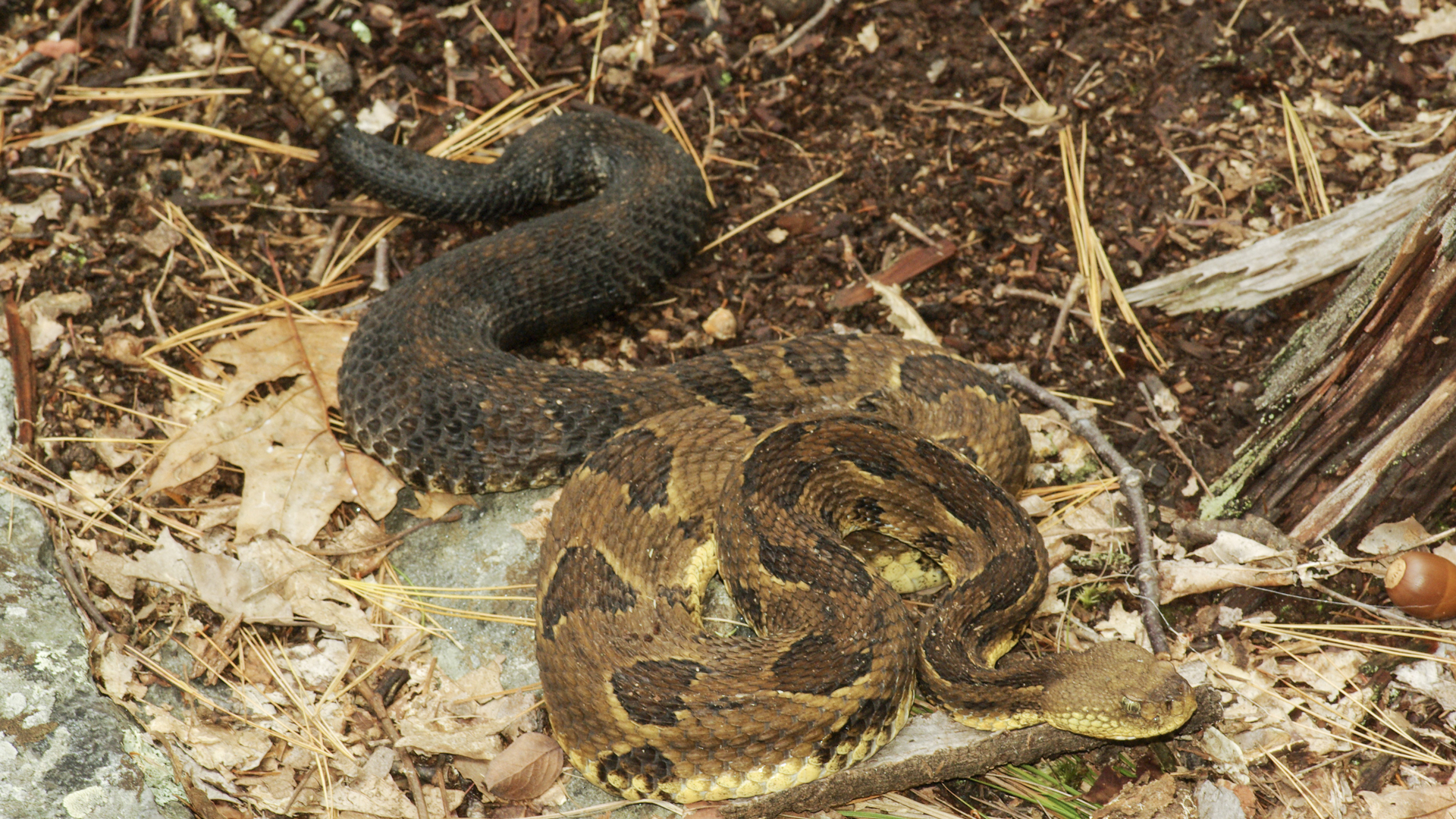
I left Dillard in order to observe the roundup, this for eastern diamondbacks. You insert a hose into the hole of a “gopher” (tortoise, not rodent), holding the end to your ear. If you hear only “poof, poof, poof,” that’s the tortoise, and you move to the next hole. If you hear “poof, poof, poof” and “buzza-buzza-brrrrraaap,” you pour in gasoline, killing the tortoise (and perhaps a cohabitating eastern indigo snake), but driving the rattler up to where you can snag it with a treble hook. Rattlesnake roundups are declining but still popular in the South and West. At the 2015 Sweetwater, Texas roundup participants killed 3,787 pounds of western diamondbacks.
A Welcome and Wise Move
In a letter to the state’s top environmental official, the Conservancy voiced a position that echoed the broader Massachusetts environmental community: “The Conservancy supports the Division’s efforts to conserve the timber rattlesnake by restoring populations in suitable habitat, with consideration for public safety, such as on Mt. Zion Island.” And French’s calm, endlessly-repeated explanations may be quieting some of the caterwauling. Now for every ignorant letter to the editor I see at least two intelligent ones.
NPR aired an interview with French and other snake experts in which enlightened host Audie Cornish asked all the right questions and listened to all the right answers.
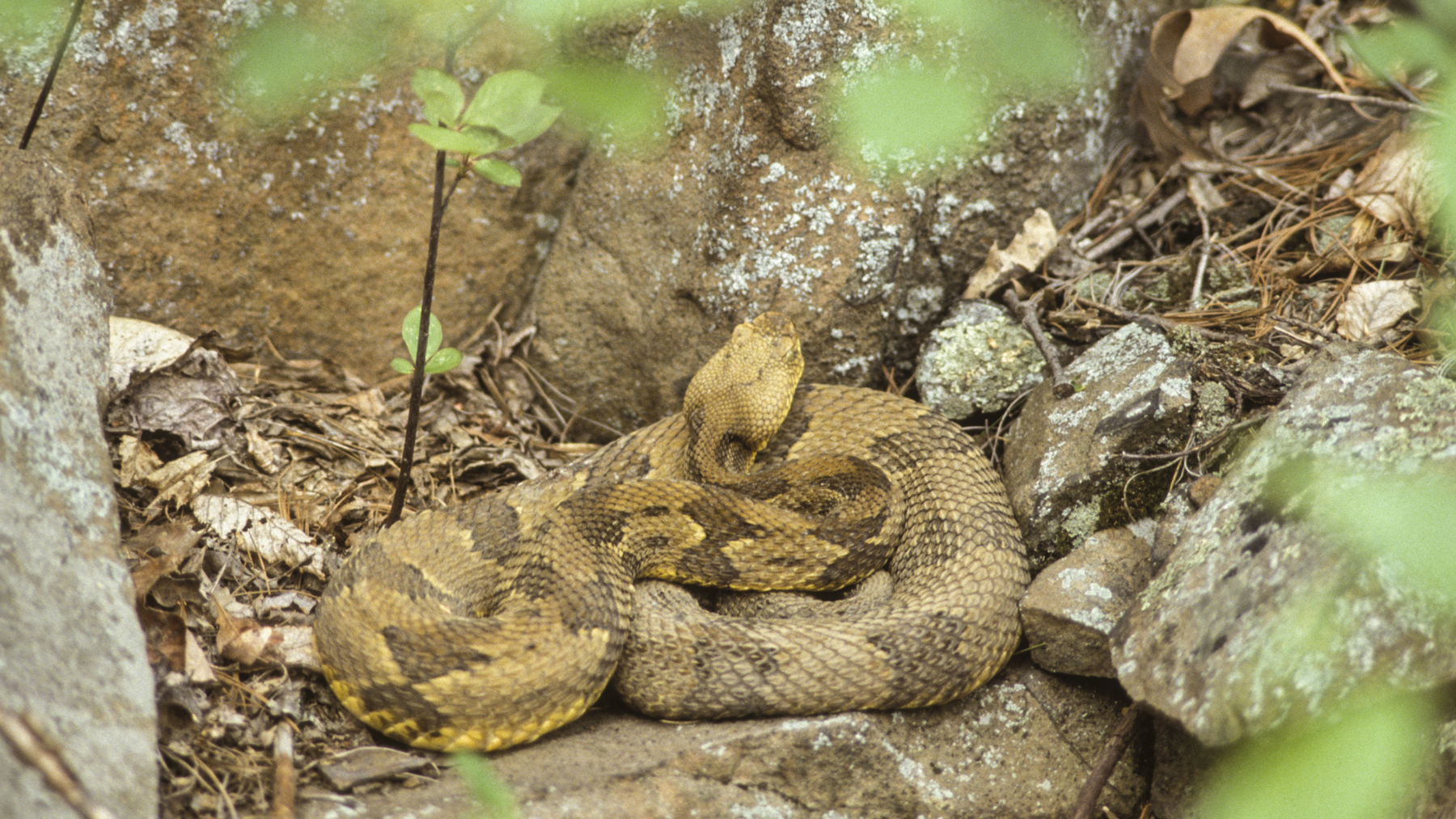
So tight is the prose of accomplished naturalist Mark Blazis, who writes the award-winning outdoor column for the Worcester (Massachusetts) Telegram, that he’s able to tell all in a mere headline: “State’s Plan to Save Timber Rattlesnake a Welcome and Wise Move.”
The Quabbin Watershed Advisory Committee has voted in favor of the project. And, ignoring an online petition demanding he nix it, Massachusetts Governor Charlie Baker has stated his support.
But the most encouraging comment I’ve heard issued from none other than Peter Mallett when I interviewed him a month after he’d ignited state and national hysteria: “Well, I’ve changed my mind,” he declared. “I’ve listened to Dr. French, and he makes a lot of sense. I know people freak out at the word ‘snake.’ But this planet was not made just for humans. Every species on Earth needs a place.”
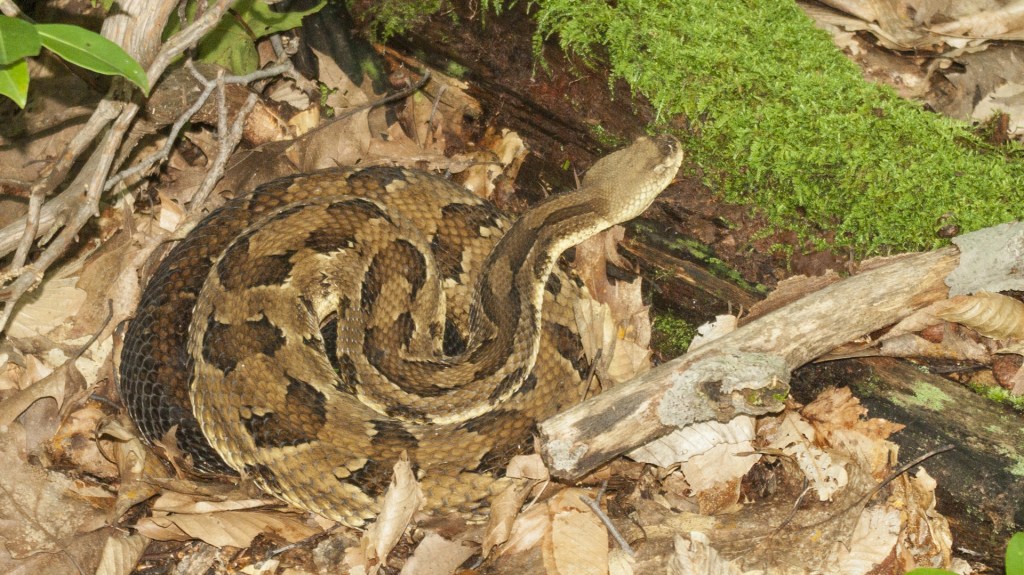



I needed to know how to help timber rattlesnakes not learn bad things about them!
In all this discussion you did not give a single reason for conserving the timber rattlesnake. What does it contribute to human or wildlife ecology that justifies the time and effort put into conserving this venomous snake.
They have long been a part of forest ecosystems. They are fascinating and beautiful creatures. I firmly believe that not every creature has to serve a human need to be worth valuing and conserving.
I unfortunately ran across one of these critters in the worst way and for lack of other recourse, I was forced to kill the poor thing for fear it would interact with a grandchild or small pet at our campsite. I was not pleased at all in the killing of said snake and it really didn’t fight until I think it knew I was trying to eradicate him. He did rattle though. I was unaware of its presence until it did so. I wish I could have taken other action but there was no place to put such a dangerous animal while I decided what to do.
Blah Blah Blah . . . over educated people making decisions that effect the safety of every taxpayer that has the right to recreation in our state. Common sense people. Anyone who thinks the timber rattler has the right to breed in captivity and be released in to the wild needs to fulfill two requirements. One: You must own a home with a substantial backyard. Two: You must have small toddler aged children that play in that back yard. Now you can show all of Massachusetts how safe and beautiful these timber rattler snakes are by releasing dozens of them in your backyard where your children play. Let the snakes then reconstitute and breed there, sharing space with you and your children. . . Stupid is as stupid does. Bottom line is if you want to save something that is likely lethal to adults and children then you first, put your money where your mouth is and make them your bedside fellow. I think then you will see the population of over educated talking heads become endangered as the timber rattler thrives.